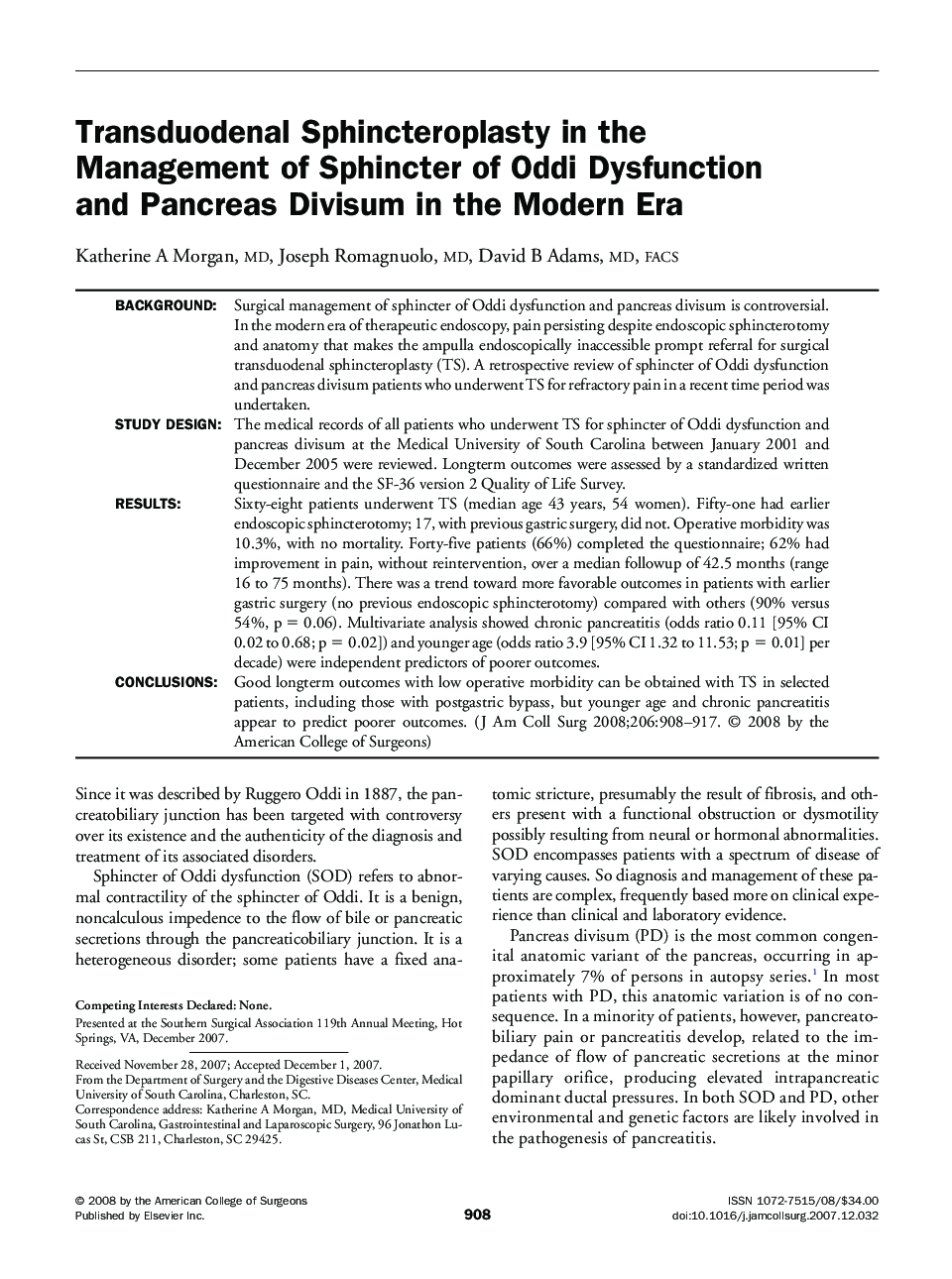| Article ID | Journal | Published Year | Pages | File Type |
|---|---|---|---|---|
| 4294874 | Journal of the American College of Surgeons | 2008 | 7 Pages |
BackgroundSurgical management of sphincter of Oddi dysfunction and pancreas divisum is controversial. In the modern era of therapeutic endoscopy, pain persisting despite endoscopic sphincterotomy and anatomy that makes the ampulla endoscopically inaccessible prompt referral for surgical transduodenal sphincteroplasty (TS). A retrospective review of sphincter of Oddi dysfunction and pancreas divisum patients who underwent TS for refractory pain in a recent time period was undertaken.Study DesignThe medical records of all patients who underwent TS for sphincter of Oddi dysfunction and pancreas divisum at the Medical University of South Carolina between January 2001 and December 2005 were reviewed. Longterm outcomes were assessed by a standardized written questionnaire and the SF-36 version 2 Quality of Life Survey.ResultsSixty-eight patients underwent TS (median age 43 years, 54 women). Fifty-one had earlier endoscopic sphincterotomy; 17, with previous gastric surgery, did not. Operative morbidity was 10.3%, with no mortality. Forty-five patients (66%) completed the questionnaire; 62% had improvement in pain, without reintervention, over a median followup of 42.5 months (range 16 to 75 months). There was a trend toward more favorable outcomes in patients with earlier gastric surgery (no previous endoscopic sphincterotomy) compared with others (90% versus 54%, p = 0.06). Multivariate analysis showed chronic pancreatitis (odds ratio 0.11 [95% CI 0.02 to 0.68; p = 0.02]) and younger age (odds ratio 3.9 [95% CI 1.32 to 11.53; p = 0.01] per decade) were independent predictors of poorer outcomes.ConclusionsGood longterm outcomes with low operative morbidity can be obtained with TS in selected patients, including those with postgastric bypass, but younger age and chronic pancreatitis appear to predict poorer outcomes.
